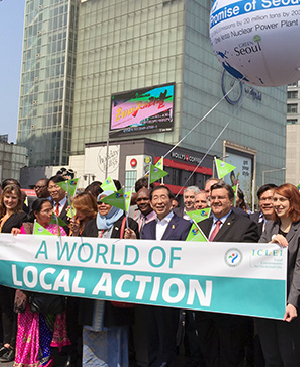- Home
- Reporting entities
- Dong Ha City
Dong Ha City
Vietnam-
Population 90491

-
Area 72.56km 2
-
GDP 5.4 TrillionVND
-
Targets by N/A N/Aemission
Targets by Dong Ha City
There are no targets yet
- Start year: 2014
- Type: Integrated climate plan
- Start year:
- Type: Technical / Infrastructural
- Status: In operation
With the goal of improving public transport and meeting the travel demands of passengers, the city has put forward active solutions in reducing personal means of transport; thereby minimizing the pressure of environmental pollution. Dong Ha has put into operation its first bus route in January 2016. At present, there are two bus routes: Dong Ha city - Ho Xa town (Vinh Linh district) with 32 km in length and Dong Ha city - Hai Lang town (Hai Lang district) with 40 km in length. The city is going to operate some new routes such as Dong Ha city – Viet Estuary – Quang Tri Acient Citadel – My Thuy beach, Dong Ha city – My Thuy beach, etc.
Read More Read Less- Transport
- Other Emissions
- Start year:
- Type: Regulation
- Status: In operation
Implementing the policy of the Government on development of non-baked bulding materials up to 2020, the Decision No. 1934 / QD-UBND of Quang Tri People's Committee and Document No. 255 / TT-UBND of Dong Ha People's Committee, the city has fully and seriously complied with the following regulations: For construction works at urban areas of the class III and higher, which are funded by the State’s capital, it must use 100% of non-baked building materials from January 15th, 2013. In other urban areas, at least 50% of non-baked building materials must be used from January 15th, 2013, and 100% must be used from 2015 onwards; For construction works of 9 storeys or more with any types of funding, at least 30% must be used by 2015; and at least 50% of lightweight non-baked building materials, calculated on the basis of building volume, must be used after 2015.
The percentage of GHG mitigation of non-baked bulding materials as compared to baked bulding materials is 20%.
- Industrial processes and product use (IPPU)
- Other Emissions
- Start year:
- Type: Technical / Infrastructural
- Status: Under construction / set up
The objective of the project is to invest in the construction of the drainage, wastewater collection and treatment system in Dong Ha city to deal with the inadequacies of urban infrastructure, reduce flooding and gradually improve the urban environment, which all contribute to the socio-economic development of the city.
The project has been implemented in two phases: phase I (2010-2014), phase II (from the end of phase I to 2017). The total investment capital of the first phase is 332,553 billion VND which comes from the World Bank as a loan and counterpart fund from the Vietnam State’s budget. The project consists of four main components: drainage and flood control; solid waste collection; building and improving the capacity of wastewater treatment stations; institutional strengthening, capacity building and technical assistance.


